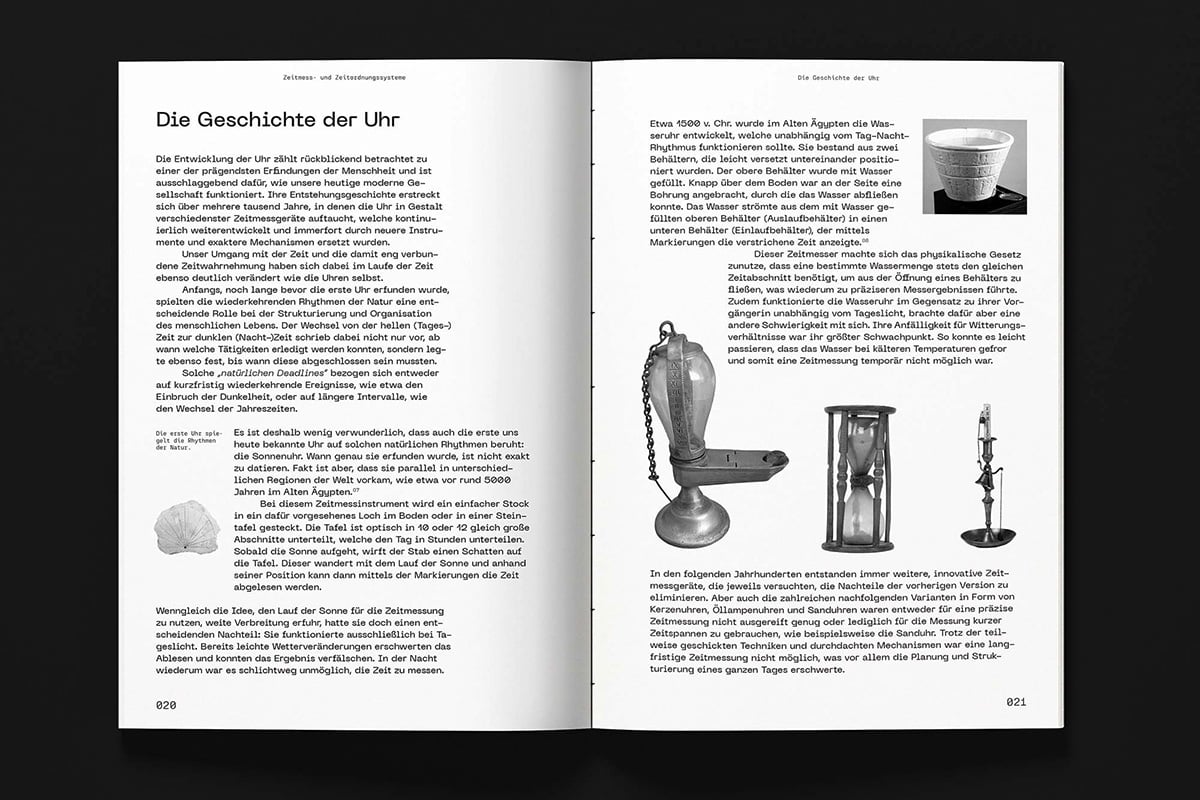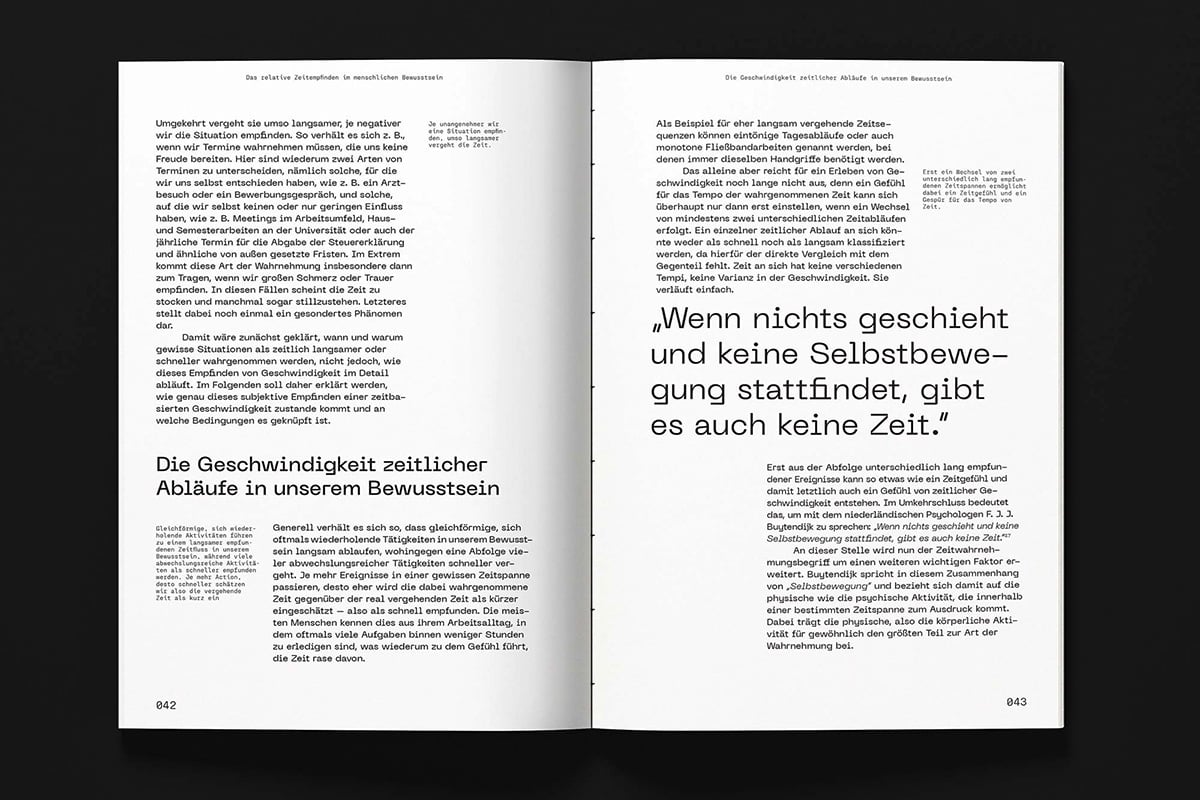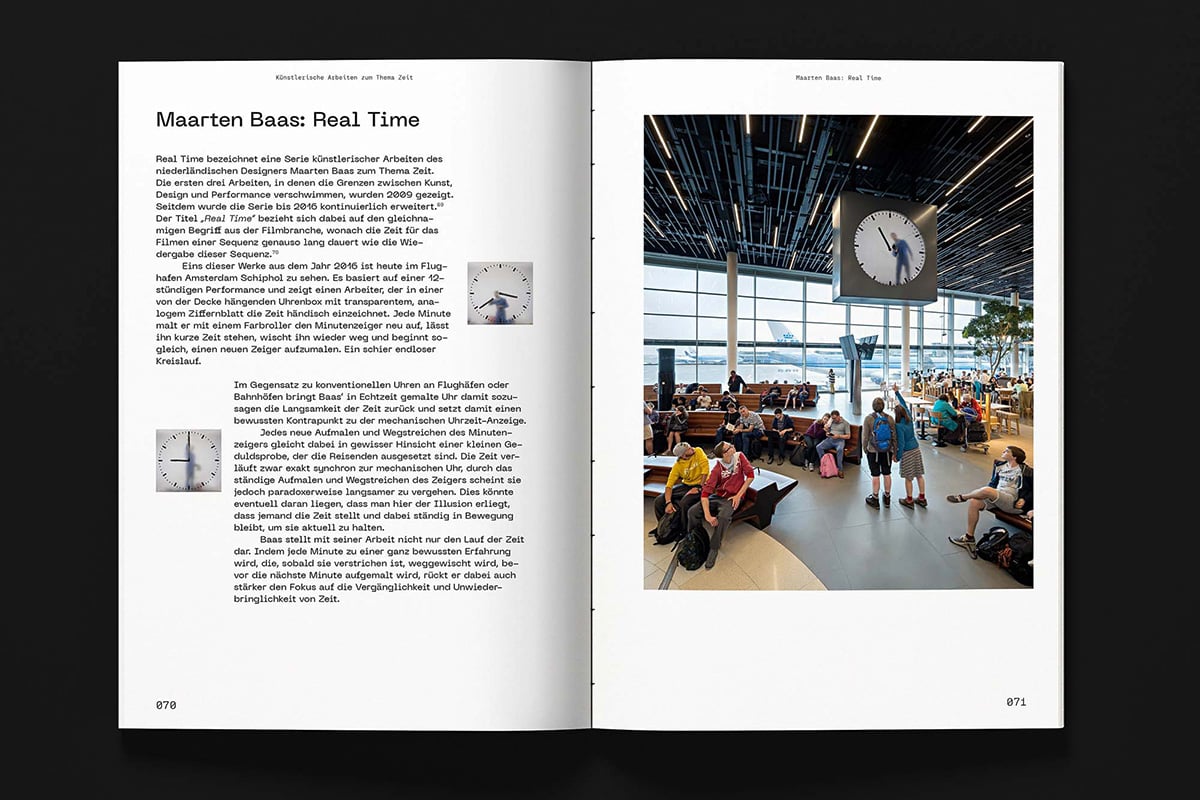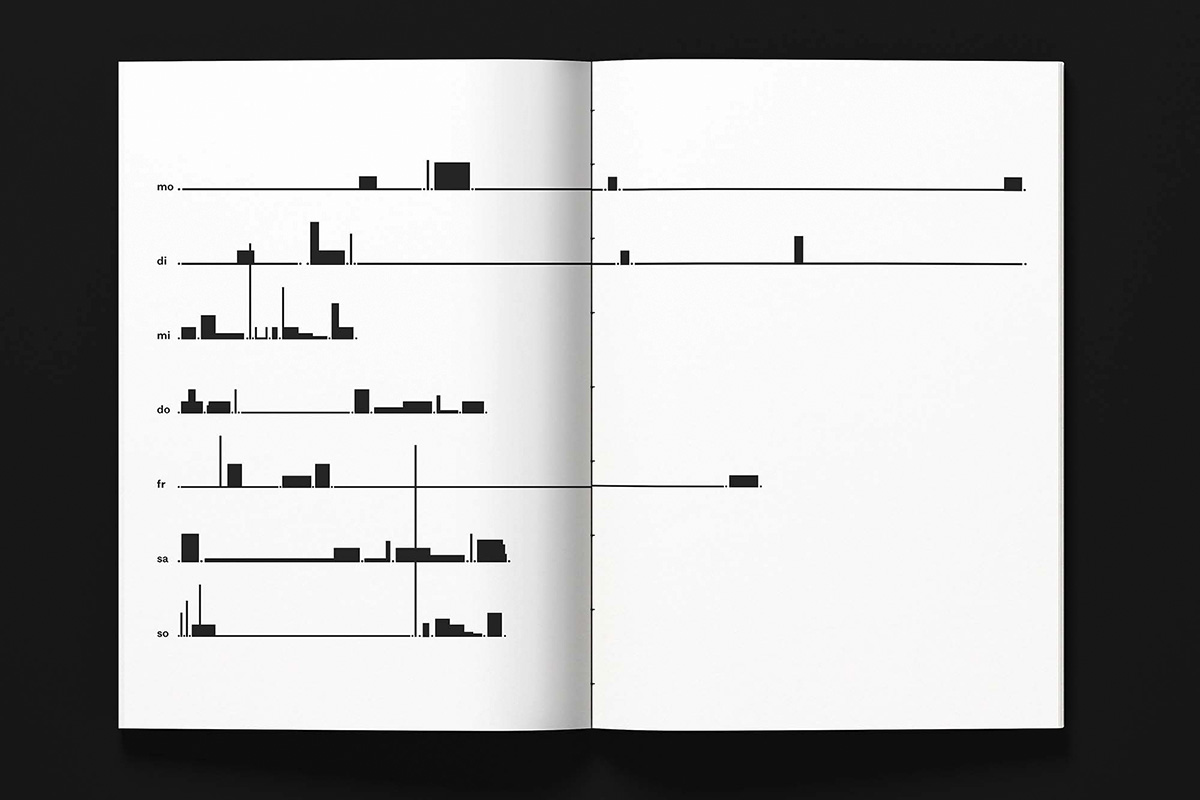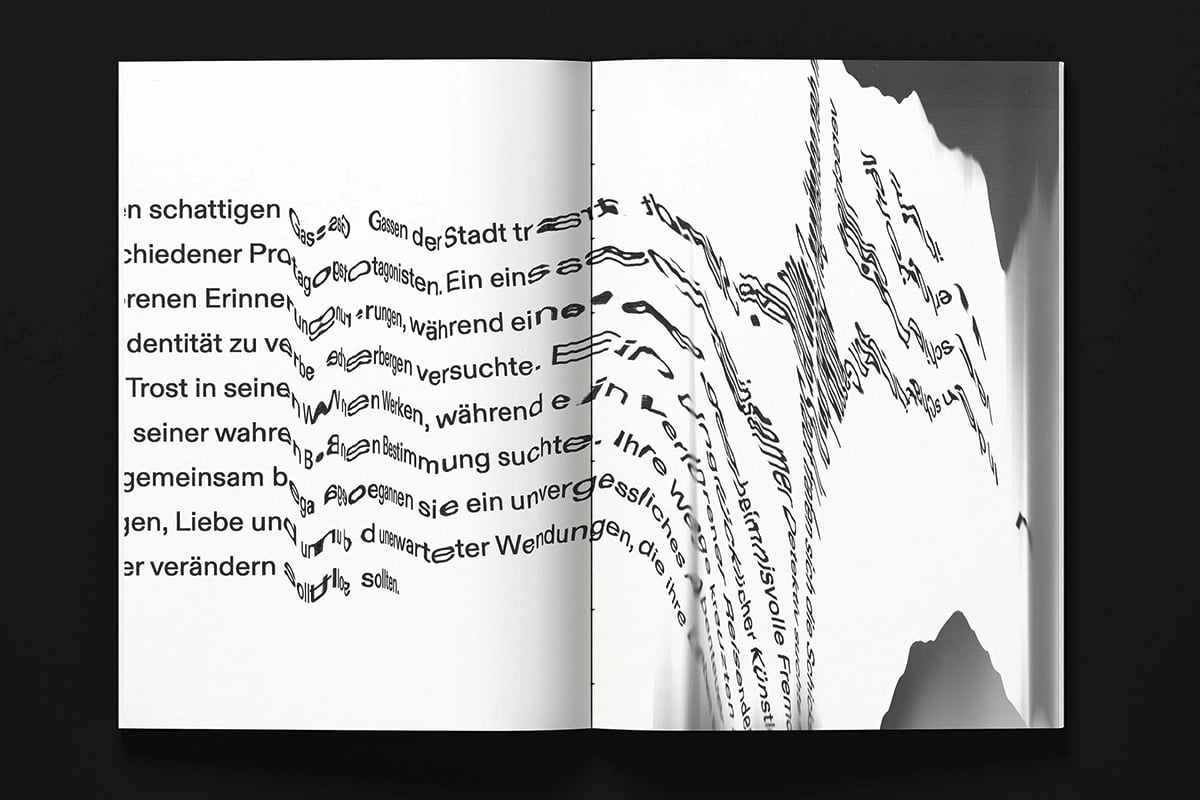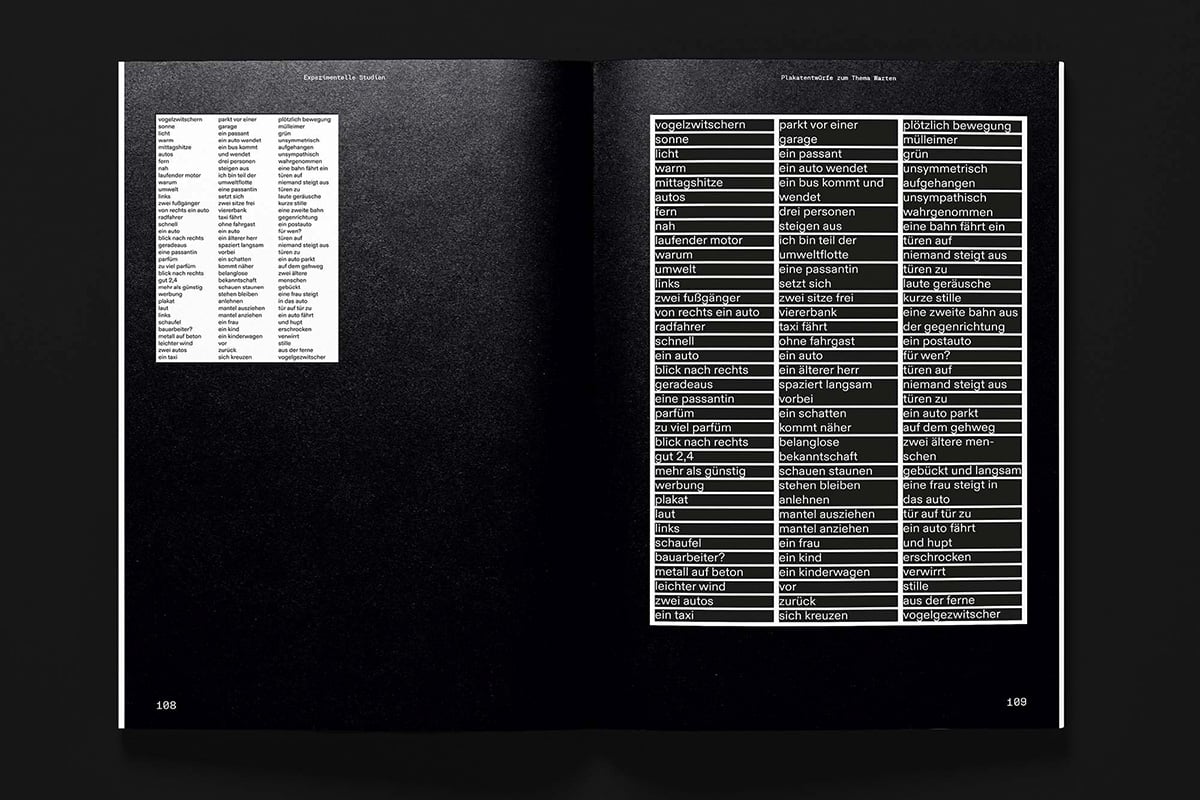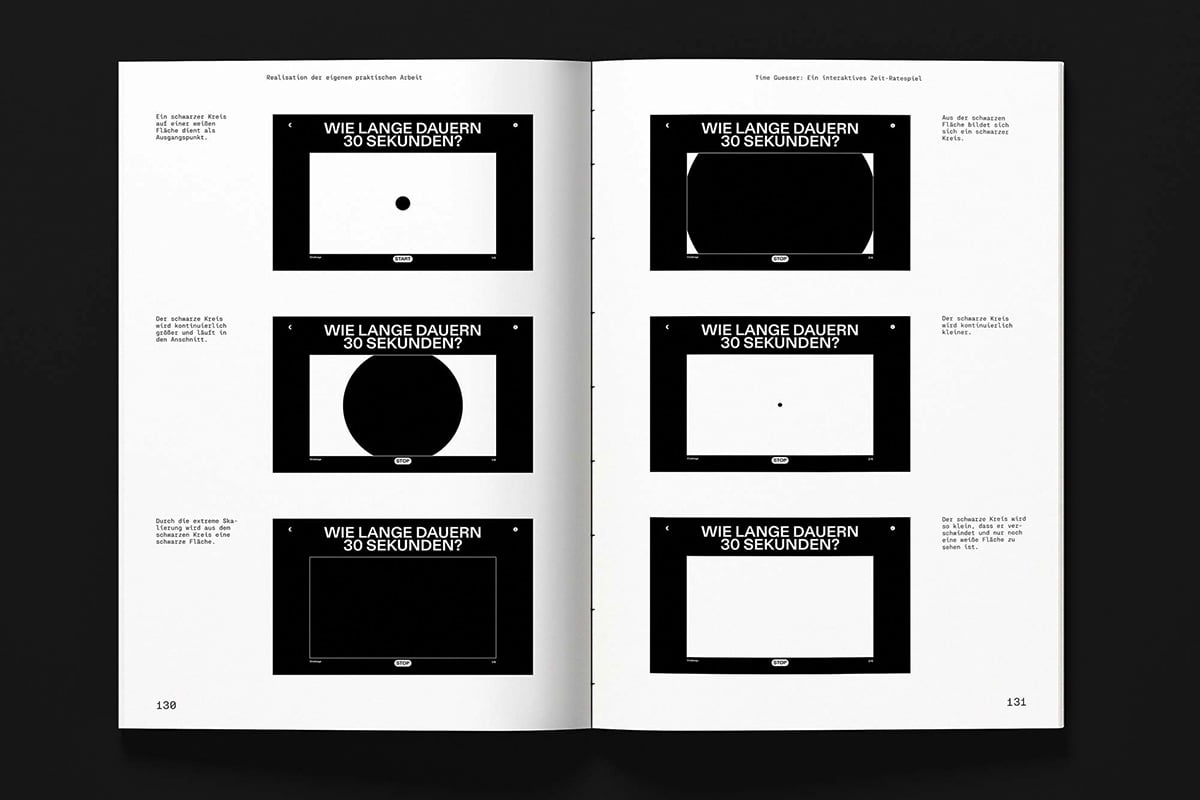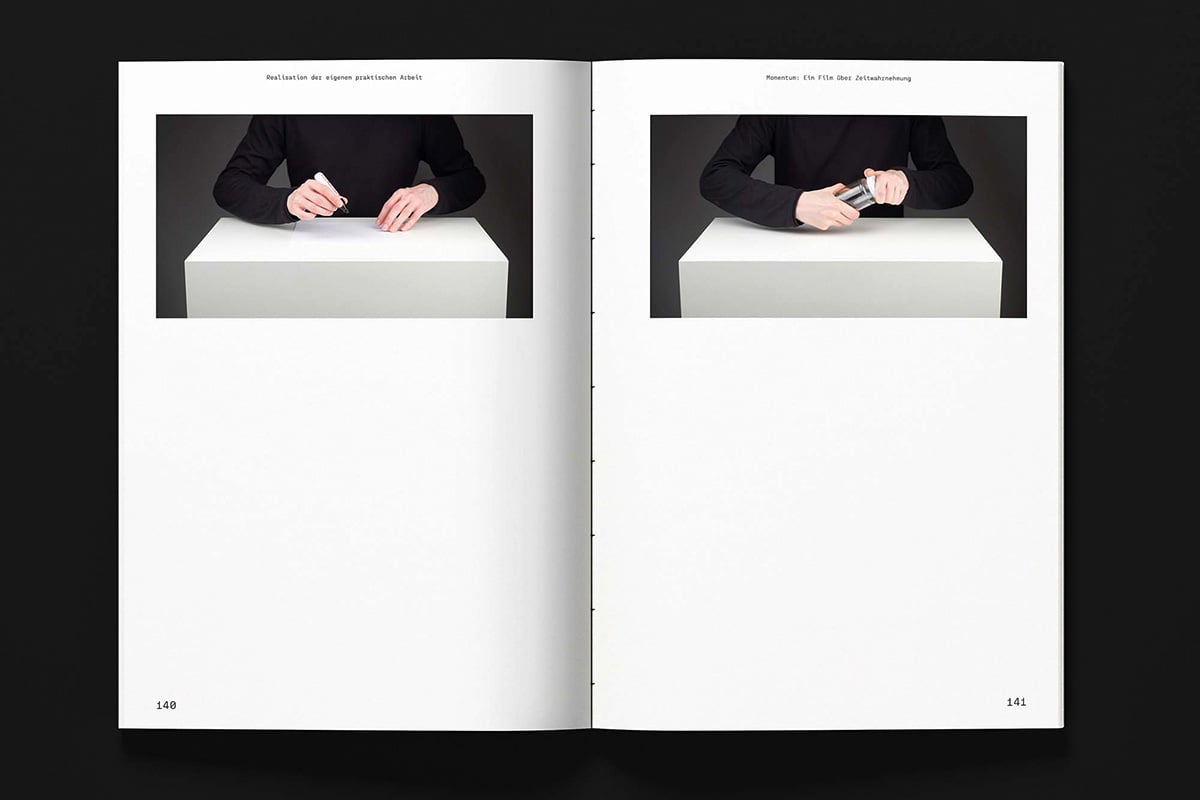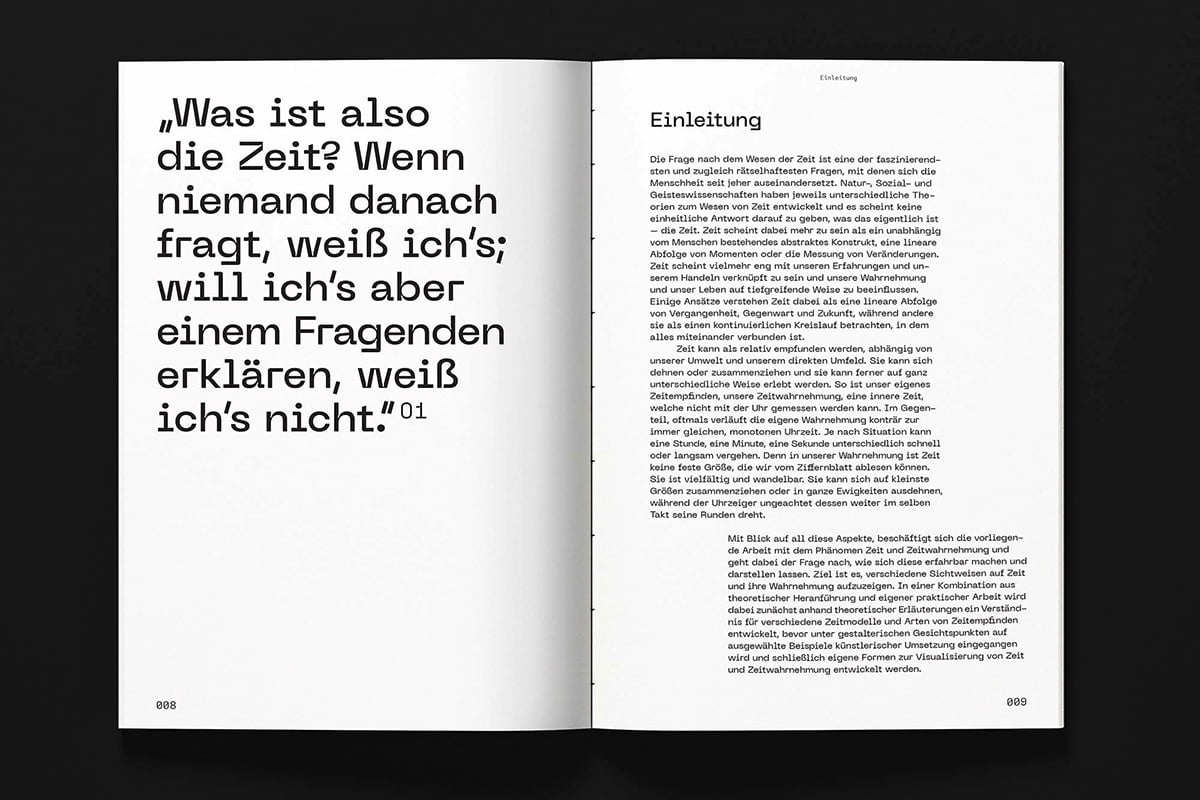Zeit zeigen
Wahrnehmung des Temporären
The question of the nature of time is one of the most fascinating and at the same time most puzzling questions that mankind has always grappled with. The natural sciences, social sciences and humanities have each developed different theories on the nature of time and there seems to be no single answer as to what it actually is—time. Time seems to be more than an abstract construct that exists independently of humans, a linear sequence of moments or the measurement of changes. Rather, time seems to be closely linked to our experiences and our actions and to influence our perception and our lives in profound ways.
Using the three components of film, game and book, this master’s degree thesis Zeit zeigen – Wahrnehmung des Temporären (Making Time Tangible) by Robert Sander examines the phenomenon of time and the perception of it with regard to their representability with the aim of demonstrating different perspectives on time, its perception and making them tangible.
After a theoretical introduction to time models and the perception of time, the first part of the book deals with the development of time measurement and organization systems and their influence on everyday life. The second part is devoted to the subjective perception of time, its influencing factors and typical facets such as dealing with waiting times. The third part examines representations of time in art, music, literature, photography and video, before the fourth part develops its own creative approaches to visualizing time, thus introducing the practical part of the work.
With “Time Guesser”, an interactive web game, users can test their own perception of time in a playful way. A total of five minimalist graphic animations in black and white are shown one after the other. In chronological order, a dot turns into a surface or, conversely, a surface turns into a dot. In addition, different animation speeds are used to counteract the impression of an underlying identical time grid. Users are asked to estimate the duration of 30 seconds each time. The measured times are finally listed.
The main part of the practical work is the film “Momentum”. It consists of several video clips strung together, showing different everyday tasks and mundane, trivial activities such as opening a can, untangling headphone cables, stowing paper documents in a transparent envelope, etc. Without exception, these are completely normal, unspectacular things, but under certain circumstances they can drive us to despair and put our patience to the test. For example, untangling headphone cables can sometimes become a nerve-wracking challenge the longer it takes.
It is precisely such moments (of irritation) in which we suddenly become completely aware of time. The change in our own perception of time, which we experience as viewers while watching the film, thus becomes the central motif of the film. While our attention is still fully focused on observing the activities at the beginning, it is challenged more and more with each passing second, until it finally collapses completely. Every move, no matter how simple, becomes the ultimate test of patience for the viewer. Although the individual scenes themselves do not last long, they are difficult to endure in the monotony of eternally repeating trials and experiments and time seems to drag on endlessly. In a kind of poetry of slowness, the film deliberately sets a counterpoint to the changed perception of time in today’s turbo society.
Zeit zeigen – Wahrnehmung des Temporären
Publisher: Robert Sander, Master thesis, Peter Behrens School of Arts, Hochschule Düsseldorf
Concept, Design and Layout: Robert Sander
Supervised by: Prof. Holger Jacobs, Prof. Martin Pfeifle
Format: 160 × 240 mm
Volume: 160 Pages
Print: Grafische Werkstatt Digitaldruck/ Offsetdruck Hochschule Düsseldorf
Fonts in use: Neue Machina, Fraktion Mono by Pangram Pangram
Further information here.

